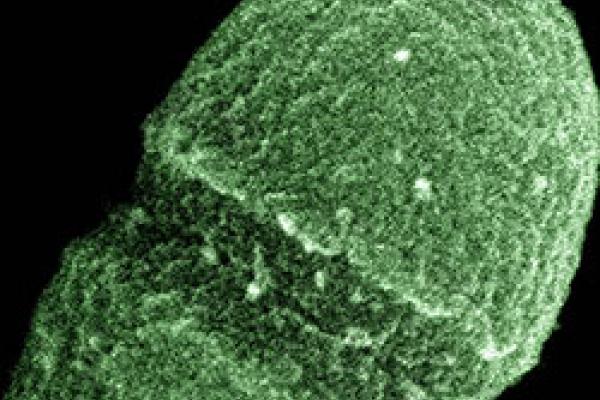The Eng1 β-Glucanase Enhances Histoplasma Virulence by Reducing β-Glucan Exposure

Andrew Garfoot, graduate student in Dr. Chad Rappleye's lab, recently had a high profile first author publication in MBio. Below is the abstract of the publication:
The fungal pathogen Histoplasma capsulatum parasitizes host phagocytes. To avoid antimicrobial immune responses, Histoplasma yeasts must minimize their detection by host receptors while simultaneously interacting with the phagocyte. Pathogenic Histoplasma yeast cells, but not avirulent mycelial cells, secrete the Eng1 protein, which is a member of the glycosylhydrolase 81 (GH81) family. We show that Histoplasma Eng1 is a glucanase that hydrolyzes β-(1,3)-glycosyl linkages but is not required for Histoplasma growth in vitro or for cell separation. However, Histoplasma yeasts lacking Eng1 function have attenuated virulence in vivo, particularly during the cell-mediated immunity stage. Histoplasma yeasts deficient for Eng1 show increased exposure of cell wall β-glucans, which results in enhanced binding to the Dectin-1 β-glucan receptor. Consistent with this, Eng1-deficient yeasts trigger increased tumor necrosis factor alpha (TNF-α) and interleukin-6 (IL-6) cytokine production from macrophages and dendritic cells. While not responsible for large-scale cell wall structure and function, the secreted Eng1 reduces levels of exposed β-glucans at the yeast cell wall, thereby diminishing potential recognition by Dectin-1 and proinflammatory cytokine production by phagocytes. In α-glucan-producing Histoplasma strains, Eng1 acts in concert with α-glucan to minimize β-glucan exposure: α-glucan provides a masking function by covering the β-glucan-rich cell wall, while Eng1 removes any remaining exposed β-glucans. Thus, Histoplasma Eng1 has evolved a specialized pathogenesis function to remove exposed β-glucans, thereby enhancing the ability of yeasts to escape detection by host phagocytes.
Garfoot AL1, Shen Q1, Wüthrich M2, Klein BS3, Rappleye CA4.
For additional information, please visit the ASM MBio website.
